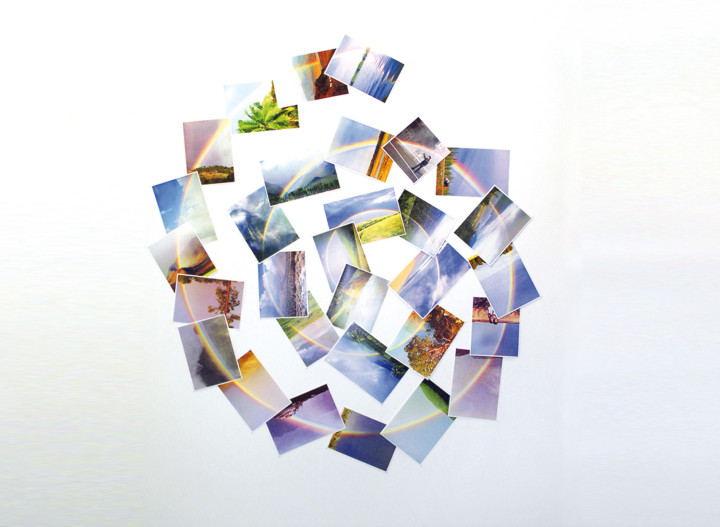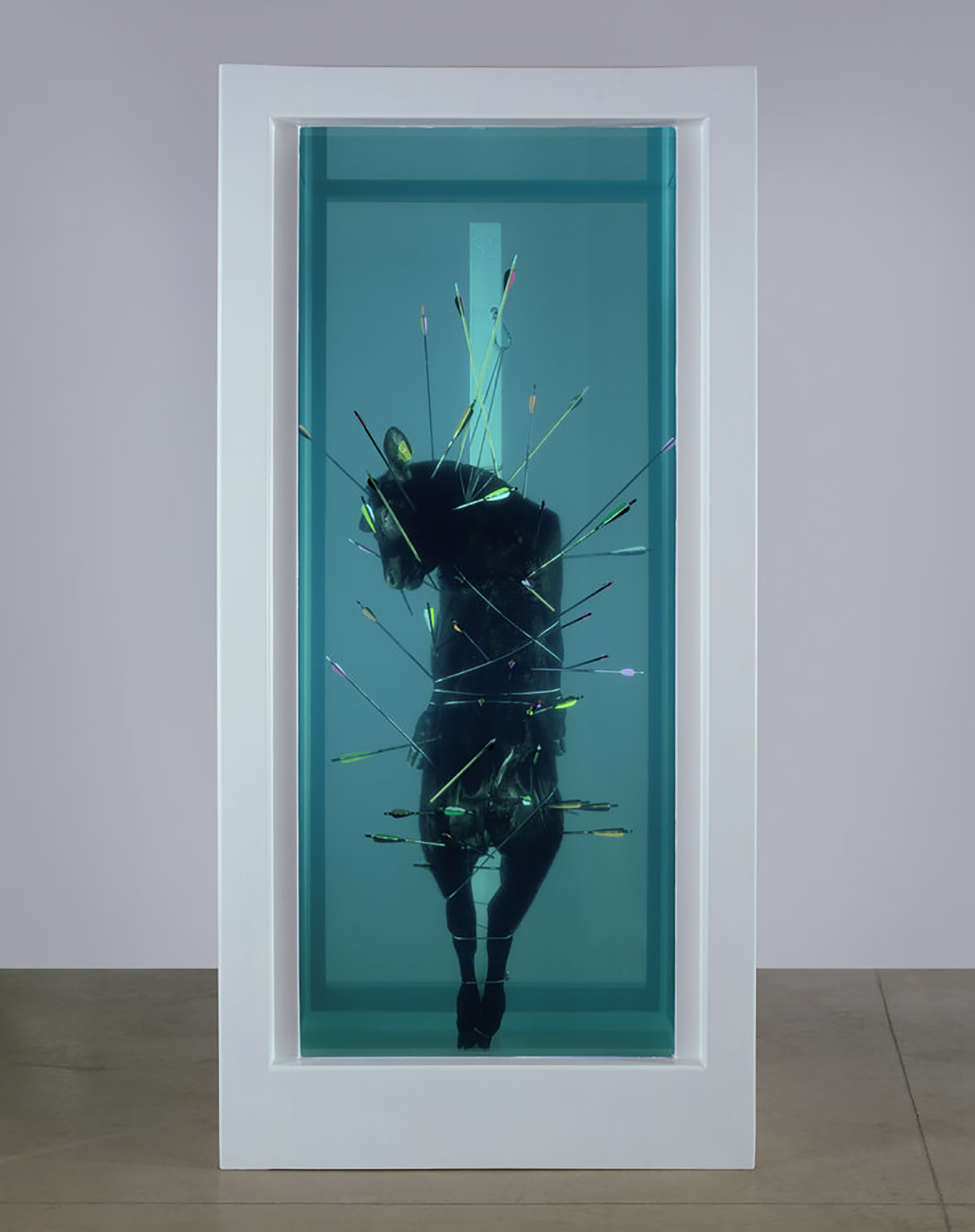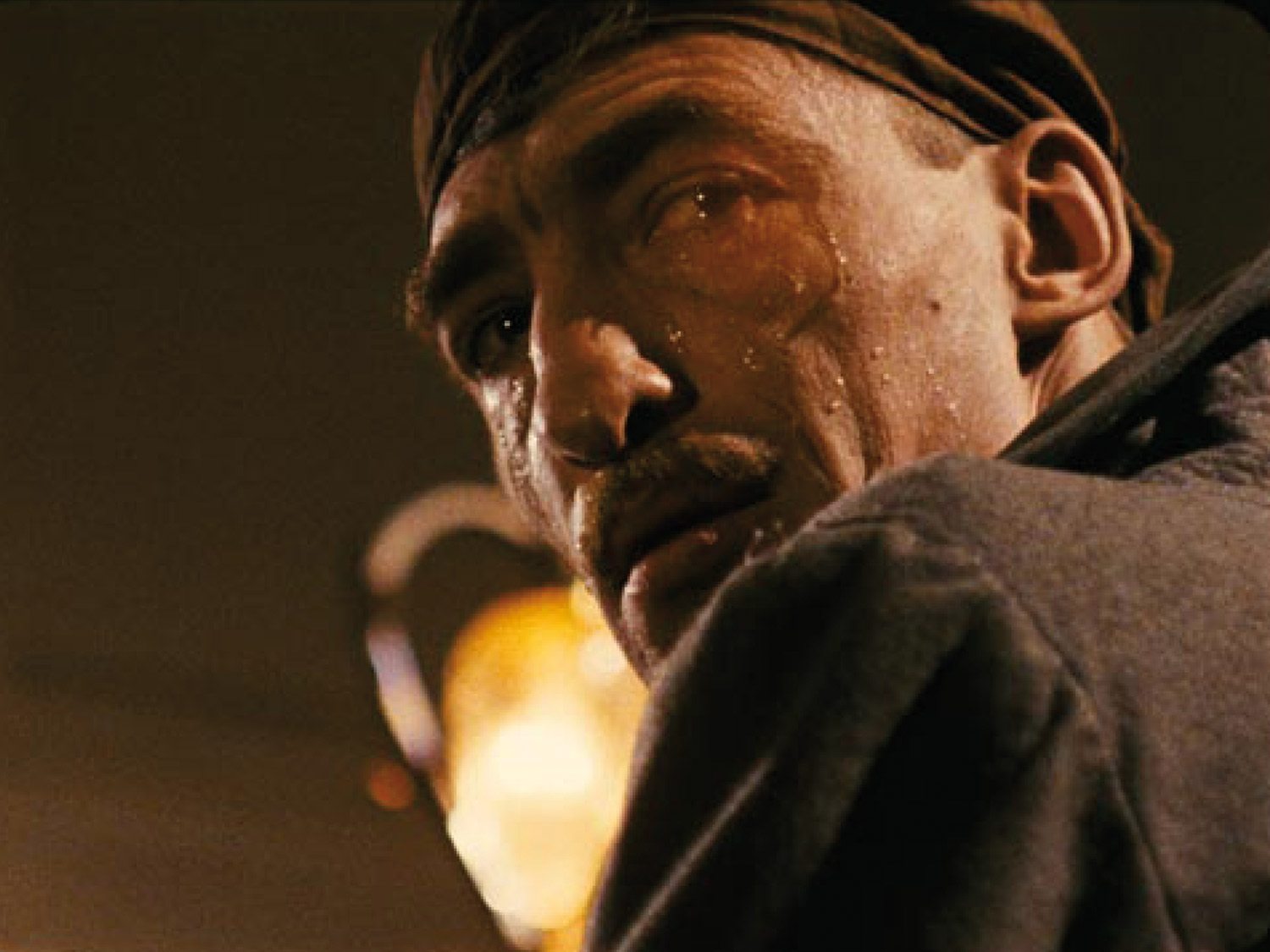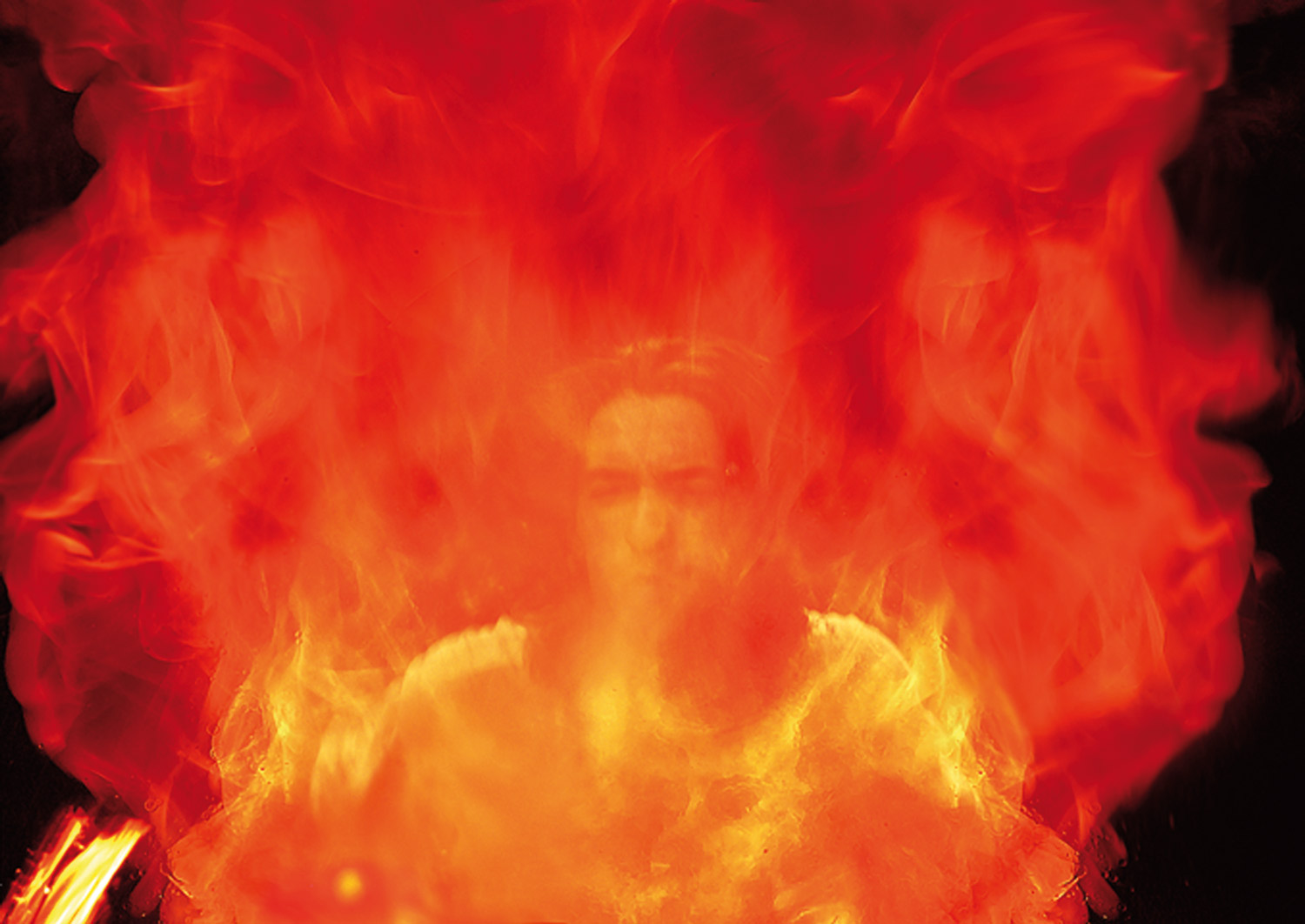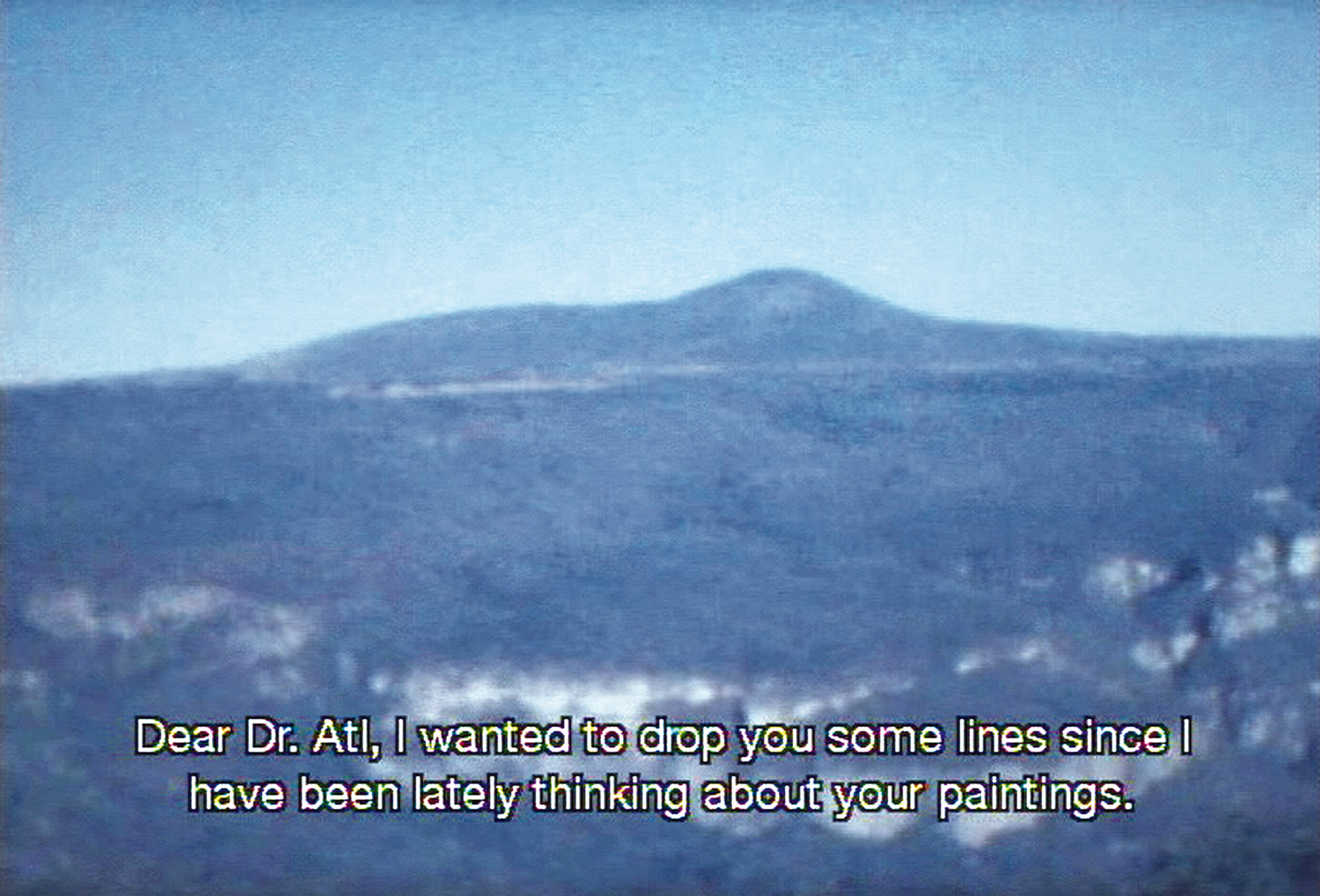
Maurizio Cattelan: Hello Peter. I’m glad we have this opportunity to talk. I am interested in knowing how you think about your art and what you think about art in general. In sharing ideas, I’m hoping we will learn about what we’re doing and how it works. Should we begin? How do you approach your work?
Peter Coffin: There is a tendency to clutter things up, to try and make sure people know something is art, when all that’s necessary is to present it, to leave it alone. I think the hardest thing to do is to present an idea in the most straightforward way. I think it was Jasper Johns who said that, “[It’s] sometimes necessary to state the obvious.” Still, how to proceed is always the mystery. I remember at one point thinking that someday I would figure out how to do this, how you do art — like “What’s the procedure here, folks?” — and then it wouldn’t be such a struggle anymore. Later I realized I would never have a specific process; I would have to re-invent it, over and over again. That was really depressing.
MC: So now that you understand your process in this way, do you have a better idea of what you’re after?
PC: If you take a half step backwards, you are a total observer. The works don’t bring an answer, but they always bring a question, which I think is important. If you have a good question it’s the first answer.
MC: So you are an idea artist and you are involved in abstracting ideas.
PC: Abstraction is also flight. It is freedom from the immediate spatiotemporal constraints of the moment; freedom to plan the future, recall the past, comprehend the present from a perspective that incorporates all three; freedom from immediate boundaries of concrete subjectivity, freedom to imagine the possible and transport oneself into it; freedom to survey the real as a resource for embodying the possible; freedom to detach the realized object from oneself more and more fully as a self-contained entity, fully determined by its contextual properties and relations, and consider it from afar, as new grist for the mill of the possible. Abstraction is a solitary journey through the conceptual universe.
MC: What kind of art do you want to make?
PC: I am for an art that is political-erotical-mystical, that does something other than sit on its ass.
MC: Like what?
PC: The more I think, the more I feel that there is nothing more truly artistic than to love people.
MC: So is that what you’re working on now?
PC: At parties people often ask artists, “What are you working on?” Sometimes I say, “Psychic sculpture.” They might ask, “What is that?” And I’ll say, “It will come to you.”
MC: Is that how it works — ideas just come to you — or is it that when asked you don’t always know what it is that you are doing?
PC: There’s some mysterious process at work here, which I don’t even want to understand.
MC: You intentionally involve your work with things that seem ‘out there’ — that people want to believe and understand but that aren’t provable. I’m thinking about fringe science and new age ideas — things like “music for plants,” an objective interest in UFOs, mapping thoughts, et cetera. In following interests like these, where is one going with this pursuit?
PC: Going partly outside oneself, interacting with something partly outside oneself. I was always interested in UFOs. I think our reality is richer than we usually let on and, well, much weirder. An imagination I’ve used is to think: what works would I make if I were a visitor from another world? Form is visual language; what would I try to say with it?
MC: I’m interested in this idea of a theoretical artwork. What form would it take?
PC: Well, I consider art as a thought form more than anything else. What we are really dealing with is our state of consciousness and the shape of our perception. The act of art is a tool for extended consciousness.

MC: This still leaves me wondering what kind of art we should make and what we should do.
PC: Before considering the question that is seemingly always the most immediate one and the only urgent one — “What should we do?” — we ponder this: How must we think? For thinking is genuine activity… the coming to presence of Being.
MC: Tell me more about what you have in mind when you say you want to consider how we think. You mean that how we think is significant to what we think?
PC: The truth is that man’s capacity for symbol-mongering in general and language in particular is so intimately part and parcel of his human being, of his perceiving and knowing, of his very consciousness itself, that it is all but impossible for him to focus on the magic prism through which he sees everything else. In order to see it, one must be either a Martian, or if an earthling, sufficiently detached… and lucky enough to become a Martian for a second and catch a glimpse of it.
MC: So we should be conscious of our perspective and frame of mind — including the influence of language itself on our thinking.
And this is important for the sake of broadening the frame of mind from which we convey or catalyze meaning. We’re in this to share ideas, after all.
PC: I thought that with all the evidence of ESP and that kind of thing, it may be a muscle that can be developed as much as any other muscle, and that someday an artist may simply expose his [or her] head directly to other people, and that may be the way he [or she] expresses [themself]. Being unable to do that, I felt there might be other ways to go directly from head to head. It occurred to me that this was another way to escape my own taste, by taking a principle I was working with and channeling it through someone else.
MC: What would you say is the rational approach for artists to take then?
PC: Conceptual artists are mystics rather than rationalists. They leap to conclusions that logic cannot reach. Irrational judgments lead to new experience. Irrational thoughts should be followed absolutely and logically.
MC: How?
PC: A work of art may be understood as a conductor from the artist’s mind to the viewer’s. But it may never reach the viewer, or it may never leave the artist’s mind.
MC: What kind of art makes for the best conductor these days?
PC: Half or more of the best new work in the last few years has been neither painting nor sculpture.
MC: Doesn’t that exclude a great deal of art?
PC: When words such as painting and sculpture are used, they connote a whole tradition and imply a consequent acceptance of this tradition, thus placing limitations on the artist who would be reluctant to make art that goes beyond the limitations. Successful art changes our understanding of the conventions by altering our perceptions. Perception is subjective.
MC: So we should challenge existing conventions of art that limit how we think about and make art. With this in mind, what do you think is important about how artists are working today?
PC: The ‘value’ of particular artists after Duchamp can be weighed according to how much they questioned the nature of art; which is another way of saying “what they added to the conception of art” or what wasn’t there before they started. Artists question the nature of art by presenting new propositions as to art’s nature. And to do this one cannot concern oneself with the handed down ‘language’ of traditional art, since this activity is based on the assumption that there is only one way of framing art propositions.
But the very stuff of art is indeed greatly related to ‘creating’ new propositions. That there is no ‘truth’ as to what art is seems quite unrealized.
MC: What would the voice of ‘Art Reason’ say to us about ‘truth’ and how we should be ‘true artists’?
PC: Thou shalt be the messenger of freedoms… Thou shalt not know exactly what thou dost, but thou shalt do it.
MC: Ha. And so what should we do?
PC: Thou shalt fight conformism, reinvent life, Thou shalt give thy love, Thou shalt grab the soul, give something back, Thou shalt have a sense of purpose.
MC: Really?
PC: Well, I don’t necessarily agree with everything I say.
MC: OK, well then what’s a good working method?
PC: Do one thing at a time, know the problem, learn to listen, learn to ask questions, distinguish sense from nonsense, accept change as inevitable, admit mistakes, say it simple, be calm, smile.
MC: Is this how you work?
PC: I like the idea that even as I sleep or play, the work is moving towards its completion.
MC: You make it sound effortless.
PC: Well, inspiration exists, but it has to find you working.
MC: So you’re working on your art even when you’re playing or sleeping?
PC: Sometimes I’ve believed as many as six impossible things before breakfast.
MC: Where do you draw your inspiration from? Is there a specific territory you mine?
PC: The Unconscious is to be explored thoroughly as the only site of truth magic available to you free of charge, night after night. Dream time is prime time.
MC: What kind of ideas would you say are good for art?
PC: The ideas need not be complex. Most ideas that are successful are ludicrously simple. Successful ideas generally have the appearance of simplicity because they seem inevitable. In terms of idea, the artist is free to even surprise himself [or herself].

MC: Do you have an artistic style?
PC: I am interested in ideas, not merely in visual products. I have forced myself to contradict myself in order to avoid conforming to my own taste.
MC: What is your art not about?
PC: All the things I know but of which I am not at the moment thinking.
MC: What is your art about?
PC: Something that is taking shape in my mind and will sometime come to consciousness. Something which is unknown to me, but which works upon me. Something I was once conscious of, but have now forgotten. Something that is searching for me and needs me to reveal itself.
MC: You mentioned that you are interested in things you do not understand.
PC: Some of my works consist of forgotten thoughts; I also use things that are not communicable, are unknowable, or are not yet known.
MC: What qualities do you find significant in art that interests you?
PC: Its boundaries are not fixed. It affects other things. It is affected by other things. It may be accessible but go unnoticed. Part of it may also be part of something else. Some of it is familiar. Some of it ist [sic] strange. Knowing of it changes it.
MC: I’m curious about the title of your recent exhibition, “The Idea of the Sun,” which you’ve told me is not about the Sun, but about the idea of a kind of “source.” Can you explain this?
PC: The Sun, with all the planets revolving around it, and depending on it, can still ripen a bunch of grapes as though it had nothing else in the Universe to do.
MC: So it works on us as we work on it in a way? This seems to me to have something to do with the kind of trust in unconscious processes of art that you allude to — maybe a kind of concentration or connection that is not measured by effort but still “has to find you working,” as you said earlier. I wonder, is this related to your interest in play, and if so, how?
PC: Play is not ordinary life. It is a way of stepping out… into a temporary sphere of activity with a disposition all its own. …[This] does not by any means prevent it from proceeding with seriousness, with an absorption and a devotion. The contrast between play and seriousness is always fluid.
MC: Can you talk about this a bit more as it relates to art?
PC: In the experience of art we… learn how to dwell upon the work in a specific way. When we dwell upon the work, there is no tedium involved, for the longer we allow ourselves, the more it displays its manifold riches to us. The essence of temporal experience is learning how to tarry in this way. And perhaps it is the only way that is granted us finite beings to relate to what we call eternity.
MC: Tell me what this has to do with it.
PC: Well, our minds are finite, and yet even in these circumstances of finitude we are surrounded by possibilities that are infinite, and the purpose of human life is to grasp as much as we can out of that infinitude.
MC: And so we extend ourselves to things and ideas out of our reach. Our reach may as well be like the bunch of grapes willing to receive the Sun and in its way reaching for it. It makes me think that the connection is not as direct as we tend to expect when we try and grasp something apart from us.
PC: Maybe it is like the experience of trying to see a distant star with the naked eye; by looking away from the star just a bit, one actually sees it more clearly.
MC: Is consciousness relevant to your work and the method of your art practice?
PC: Yes, the method is, in fact, the external form of consciousness manifest in acts, which takes on the fundamental property of consciousness — its intentionality. The essence of consciousness is being with the world. Accordingly, consciousness is in essence a ‘way towards’ something apart from itself, which surrounds it and which it apprehends by means of its ideational capacity. Consciousness is thus by definition a method, in the most general sense.
MC: You talk about ideas as though they are living inside you or as though they operate independently of you. I hear you hum while you work sometimes and wonder if you have the same feeling about a melody you improvise, for example. Is the melody like an idea living inside you that expresses itself when you let it?
PC: It isn’t easy… Hums aren’t things which you get, they’re things which get you. And all you can do is just go to where they can find you.

MC: I want to talk more about this notion of ideas having a life of their own. Where and how do they exist in this way and where do you think we are at the moment with ideas?
PC: I think there’s an image of thought that changes a lot, that’s changed a lot of history.
By the image of thought I don’t mean its method but something deeper that’s always taken for granted, a system of coordinates, dynamics, orientations: what it means to think, and to orient oneself in thought.
However one sees it, we’re on the plane of immanence; but should twe go around erecting vertical axes and trying to stand up straight or, rather stretch out, run out along the horizon, keep pushing the plane further out? And what sort of verticality do we want, one that gives us something to contemplate or one that makes us reflect or communicate? Or should we just get rid of all verticality as transcendent and lie down hugging the earth, without looking, without reflecting, cut off from communication?
MC: Are you describing a kind of shared field in which thoughts and inquiry co-exist?
Is it a kind of “plane of immanence,” as you say, in which ideas are characterized by their position or direction, for example?
PC: I really feel that there’s a kind of dialogue of immanence, that certain questions become demanding and potentially answerable at a certain point in time, and that everyone involved on a particular level of asking questions a physicist or a philosopher or an artist is essentially involved in the same questions.
MC: So you find that questions are central to your practice then. I get the sense that the questions are more important to you than the answers.
PC: The thing that really struck me the most as I got into developing my interest in questions is the degree to which, as a culture, we are geared for just the opposite. We tag our renaissances at the highest level of performance, whereas it’s really fairly clear to me that once the question is raised, the performance is somewhat inevitable, almost just a mopping up operation, merely a matter of time. Now I’m not anti-performance, but I find it very precarious for a culture only to be able to measure performance and never to be able to credit the questions themselves.
MC: This relates back to your comment about art as an important alternative to rational thought, which we ordinarily and almost automatically assume to be the framework within which we should operate once a question has been posited.
PC: Reasoning appears to be more confused, more haphazard, partly because of the scale of what it tries to deal with. The logical, in a sense, seems more successful because it cuts the scale down. In fact that’s what makes it logical: it takes a very concise cut in the world and simply defines or refines by deduction the properties of that cut, but it never deals with the overall complexities of the situation. It only applies within the confines within which it operates, so it seems much clearer. The artist, however, as a reasoning being, deals with the overall complexity of which all the logical subsystems are merely segments, and deals with them through the intuitive side of his [or her] human potential — and here inconsistencies are as meaningful as consistencies.
The civilization that you and I live in makes most of its critical decisions based on logic. I feel that maybe a hundred and fifty years ago, which is now a legacy we are having to deal with, art began to drop out of that; it began to become less logical. Even though it proceeded logically, it found questions that could not be answered logically. Now, at some point, if we should look at the world and feel that all things are not subsumable to or resolvable by logical thinking then we have to begin to develop an antithesis — and that really is what contemporary art is in our culture, an antithesis.

